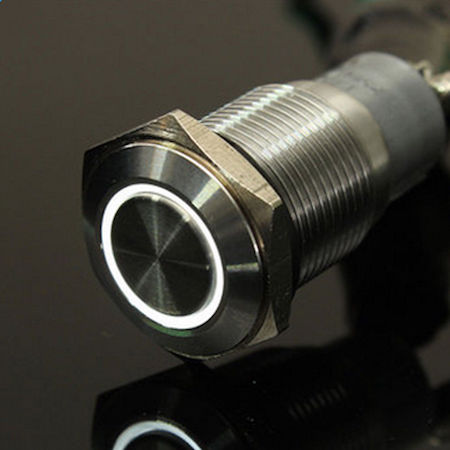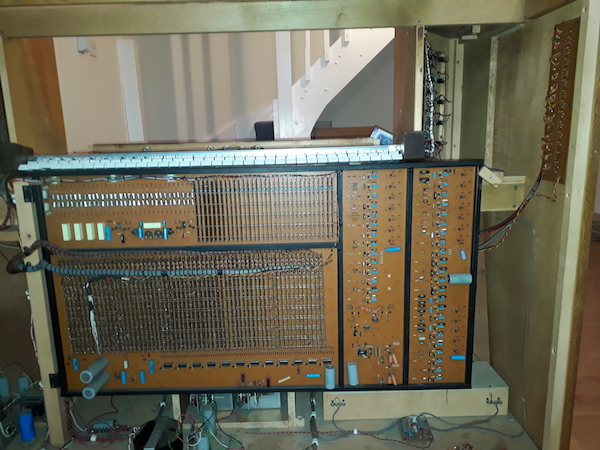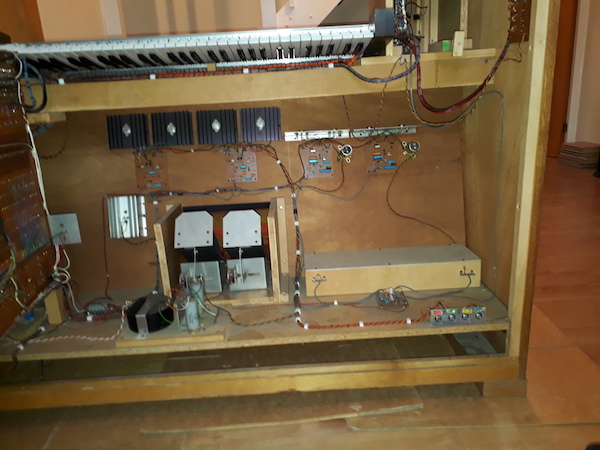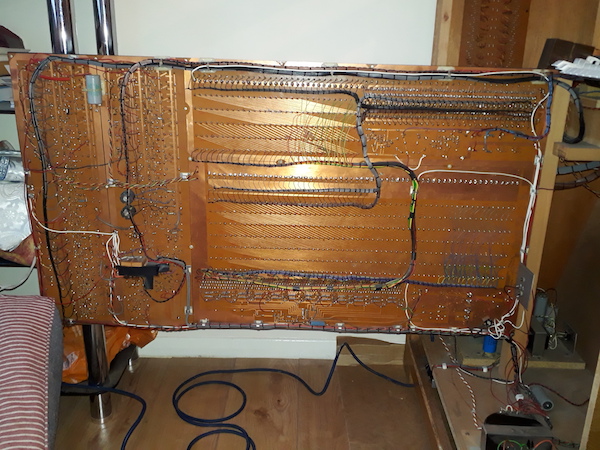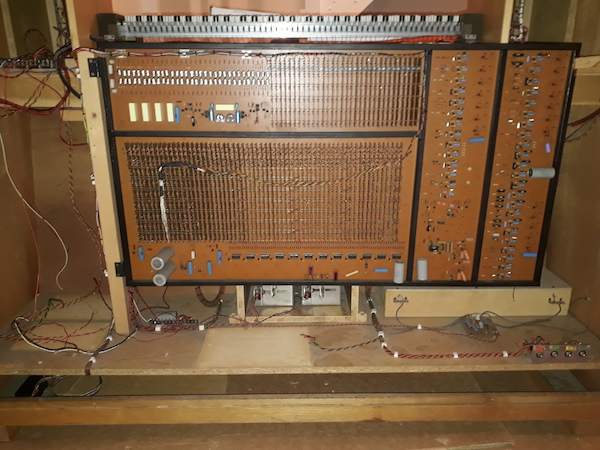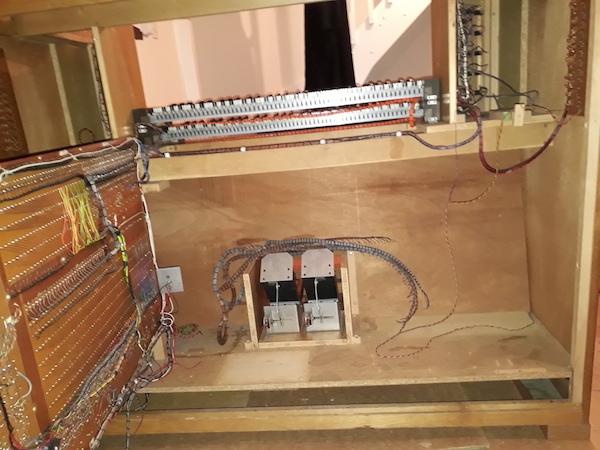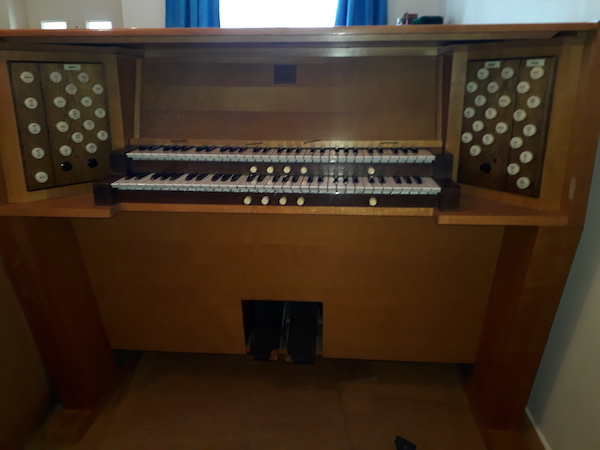[FX/Grams: Journey of the Sorcerer]
So there I was, nose deep in a mug of tea and scanning for interesting organ bits on eBay, when this pops up:
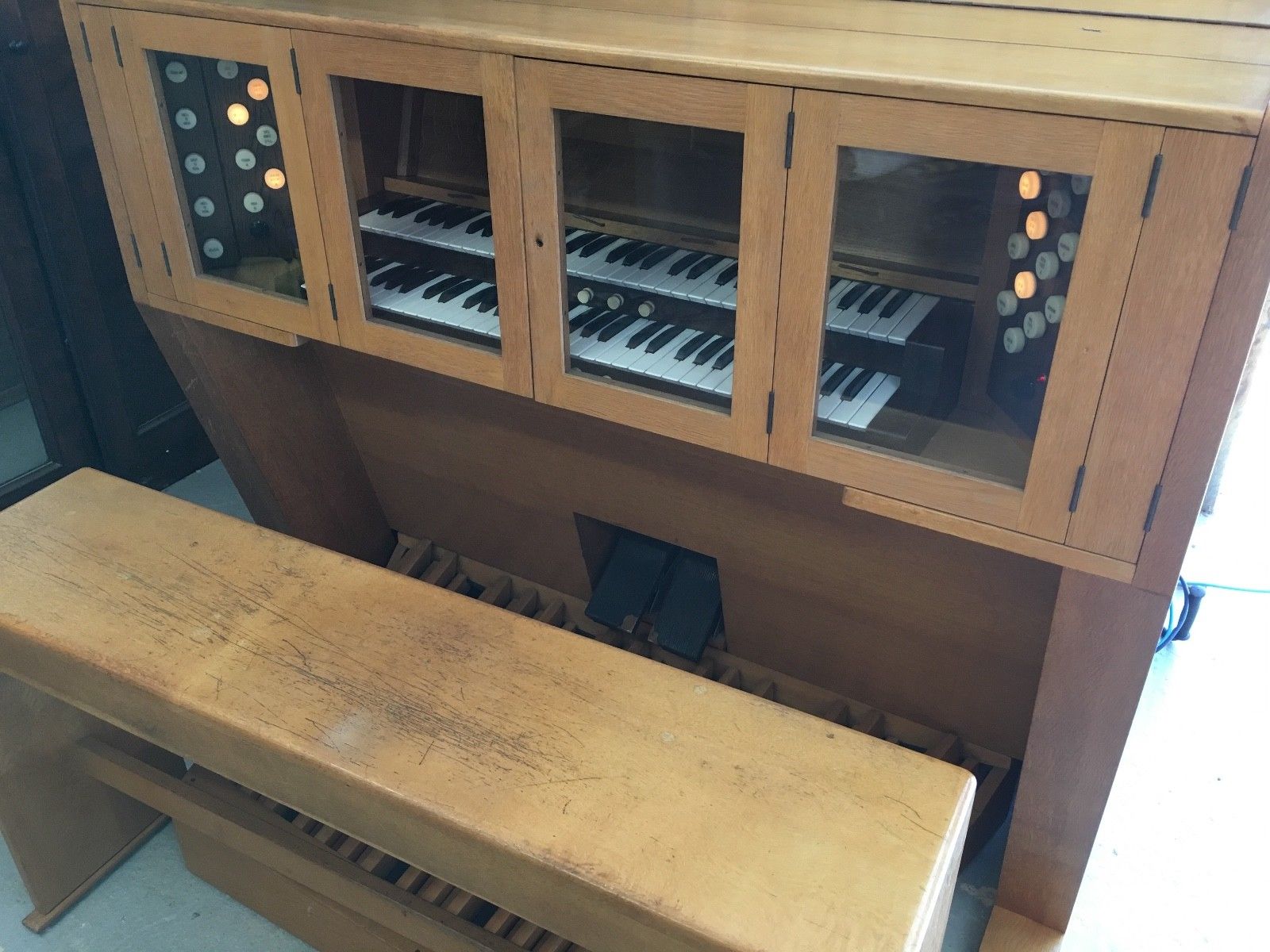
This little beauty is a Wyvern analogue organ, model ‘Passau’. Is it not lovely? Here is another photo:
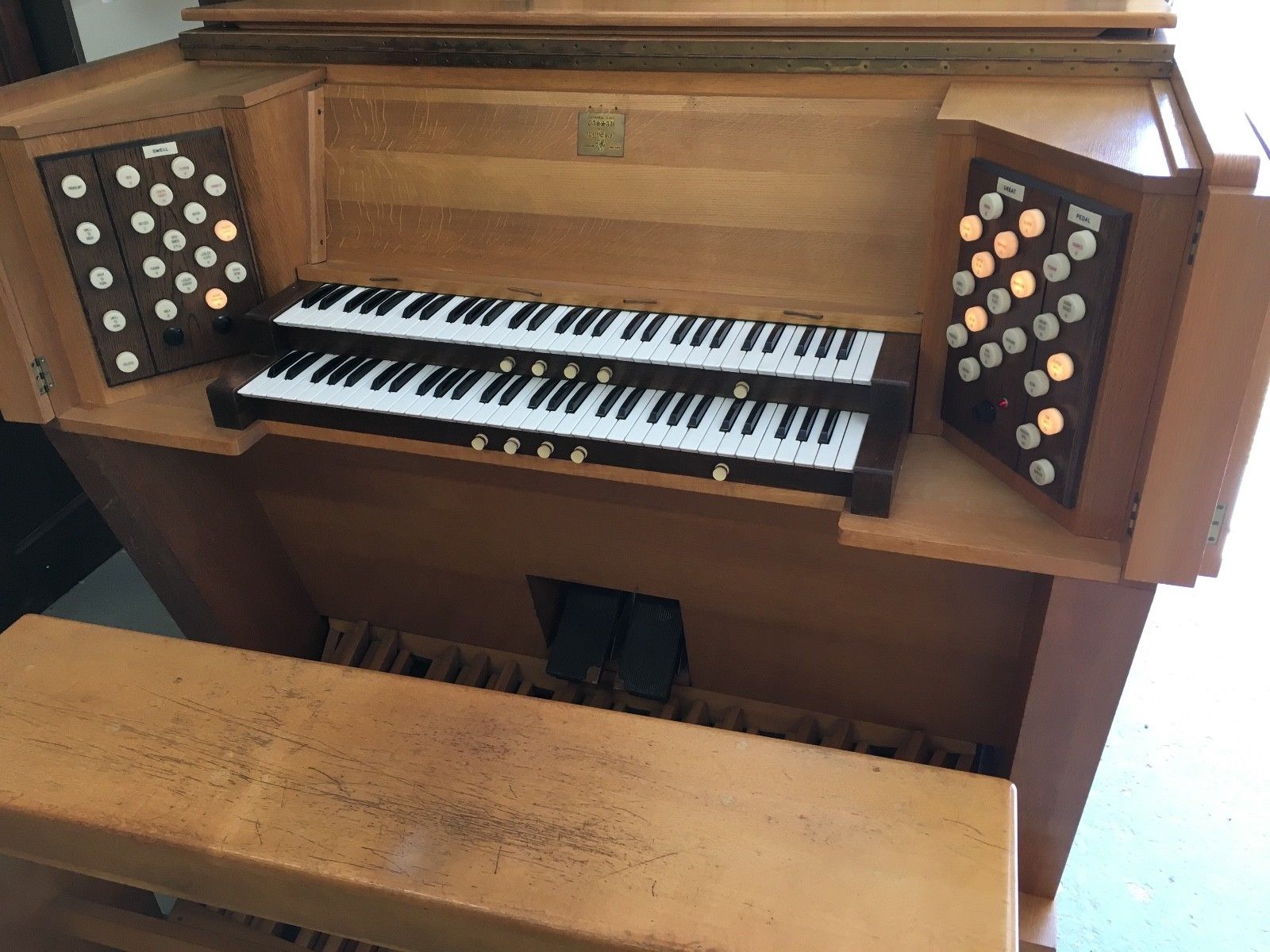
This is how it was advertised, with a starting price of £70:
Wyvern Passau organ. Two full compass keyboards, 32 note radial concave pedalboard and full length bench. The organ is listed as for parts as it is about 40 or more years old and also requires external speakers to work (there are 4 outputs). However the luminous touch stops (push to switch on and push again to cancel) work. As this is an old analogue organ it has no midi but has a handsome oak console with folding glass doors.
It is heavy and will require a van to collect but we can help to load. Dimensions: W 1530mm H 1270mm D 770mm D inc pedals 1140.
Well, how could I resist? Pausing only to check my wallet for the requisite quantity of farthings, I placed a bid and hoped. In the end, I picked it up for only £122, which was well within my budget. Having paid up, I negotiated a collection date with the seller, and then negotiated the good offices of Andrew, a friend from church. Andrew is somewhat older than I am, but I am somewhat less fit than he is, so that balanced out. “Come along for a trip to Sussex,” I said. “It’ll be fun,” I said. “We’ll be back just after tea,” I said. Oh how we laughed. Eventually.
The trip down to Sussex from North Norfolk wasn’t too bad, but I was reminded of the old saying, “If you want to get anywhere from Norfolk, start from somewhere else.” Norfolk is a sleepy little county and we aren’t too fond of roads that travel more than a few yards in a straight line. Still, we made good time and only hit a small amount of congestion on the M25. Arriving at the seller’s house, I discovered that the instrument was being sold by Mr Wyvern Organs himself, who couldn’t bring himself to throw it away. Although he didn’t remember (not that he should), this was the same man who sold me my old Toccata III back in the early 2000s. Although Wyvern no longer keep a shop, they are very much in business.
The organ was quickly loaded onto the van and we began the return journey. Progress was good at first, but then we spent several hours in slow-to-stationary traffic on the M25, and it just got worse and worse. We arrived back at my house after 10pm and then began the task of unloading. This was rather challenging as the console appeared to have gained several hundredweight during the journey north. It took us until midnight to get it into the house, and required the removal of the front door (cue Bernard Cribbins, “‘Right,’ said Fred”) since the console was about a quarter of an inch too wide to go through. Here it is, in its temporary location in the middle of my lounge (minus pedalboard and glass doors):
Total cost including purchase, van hire, diesel and coffee and lunch for Andrew (for whose help I am deeply grateful): £275
